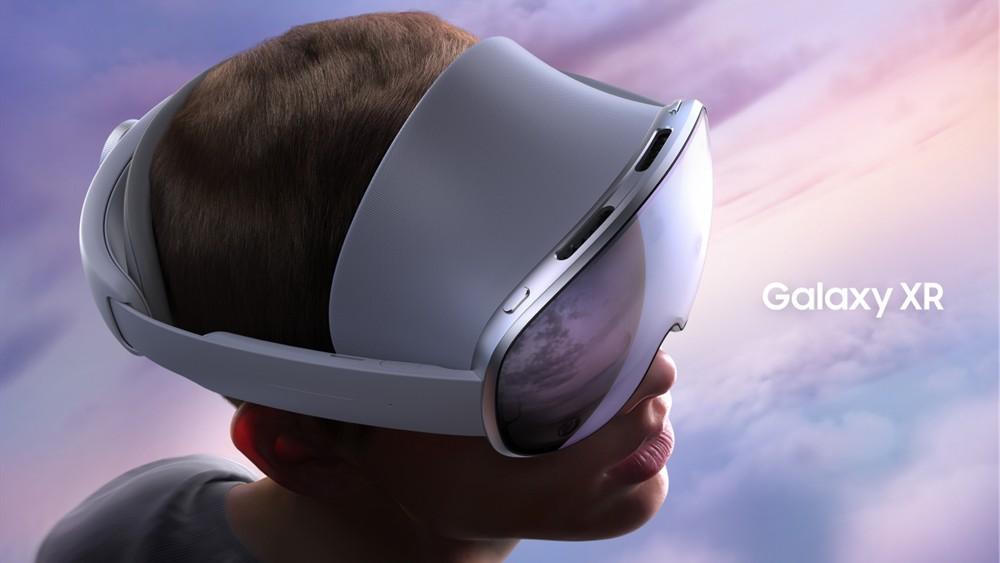The era of Android virtual reality is here… again. Google’s first two attempts at making Android fit for your face didn’t work out, but the AI era and a partnership with Samsung have enabled a third attempt, and maybe the third time’s the charm. Samsung has unveiled the Galaxy XR headset, the first and currently only device running Google’s new Android XR platform. It’s available for pre-order today, but it will not come cheap. The headset, which doesn’t come with controllers, retails for $1,800.
Galaxy XR is a fully enclosed headset with passthrough video. It looks similar to the Apple Vision Pro, right down to the battery pack at the end of a cable. It packs solid hardware, including 16GB of RAM, 256GB of storage, and a Snapdragon XR2+ Gen 2 processor. That’s a slightly newer version of the chip powering Meta’s Quest 3 headset, featuring six CPU cores and an Adreno GPU that supports up to dual 4.3K displays.
The new headset has a pair of 3,552 x 3,840 Micro-OLED displays with a 109-degree field of view. That’s marginally more pixels than the Vision Pro and almost three times as many as the Quest 3. The displays can refresh at up to 90Hz, but the default is 72Hz to save power.
Like other XR (extended reality) devices, the Galaxy XR is covered with cameras. There are two 6.5 MP stereoscopic cameras that stream your surroundings to the high-quality screens, allowing the software to add virtual elements on top. There are six more outward-facing cameras for headset positioning and hand tracking. Four more cameras are on the inside for eye-tracking, and they can scan your iris for secure unlocking and password fill (in select apps).
Samsung says the Galaxy XR has enough juice for two hours of general use or two and a half hours of video. That’s not terribly long, but you may not want to wear the 545 grams (1.2 pounds) headset for even two hours. That’s even a little heavier than the Quest 3, which has an integrated battery. However, both pale in comparison to the 800 g (1.7 pounds) second-generation Vision Pro.
Android on your face, take three… or four?
The new Samsung headset debuted at Google I/O this year, when it was known as Project Moohan. This device didn’t get quite the same attention as Google’s prototype Android XR smartglasses, but it’s now the debut piece of hardware for Android XR. You won’t see much of Samsung’s influence in the software, which focuses on a collection of Google XR experiences without a hint of One UI.
Google first dipped its proverbial toe in the XR waters with Cardboard, a low-cost mobile VR solution that Google never took completely seriously. The next attempt, known as Daydream, still had users strapping their phones into headsets. While the headset hardware was nicer, Daydream didn’t last much longer than Cardboard before Google killed it in 2019. Samsung also has its own sordid history with Android XR. The company’s Gear VR was similar to Daydream in that it required placing your phone in a special headset. Samsung only pursued this idea for three years, killing support in 2017.
Android XR is Google’s most ambitious take on Android as a virtual environment. The company calls it an “infinite screen” that lets you organize floating apps to create a custom workspace. The software includes 3D versions of popular Google apps like Google Maps, Google Photos, and YouTube, along with streaming apps, games, and custom XR experiences from the likes of Calm and Adobe.
Google says that its support of open standards for immersive experiences means more content is coming. However, more than anything else, Android XR is a vehicle for Gemini. The Gemini Live feature from phones is available in Android XR, and it’s more aware of your surroundings thanks to all the cameras and orientation sensors in Galaxy XR. For example, you can ask Gemini questions about what’s on the screen—that includes app content or real objects that appear in passthrough video when you look around. Gemini can also help organize your floating windows
While more Android XR hardware is planned, Galaxy XR is the only way to experience it right now, and it’s not cheap. Samsung’s headset is available for purchase at $1,800. If hand gesture control isn’t enough, you’ll have to pay another $175 for wireless controllers (discounted from the $250 retail price). Galaxy XR also supports corrective lenses if you need them, but that’s another $99.
Buyers get a collection of freebies to help justify the price. It comes with a full year of Google AI Pro, YouTube Premium, and Google Play Pass. Collectively, that would usually cost $370. Owners can also get three months of YouTube TV for $3, and everyone with Galaxy XR will get access to the 2025–2026 season of NBA League Pass in the US.

 Amazon will buy thousands of pedal-assist cargo vehicles from Rivian spinoff Also
Amazon will buy thousands of pedal-assist cargo vehicles from Rivian spinoff Also